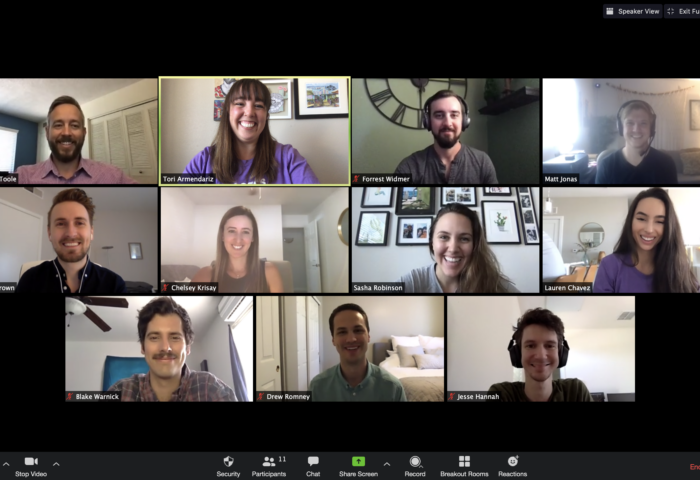
Articles
How To Prepare Your Team To Return To The Office
June 9, 2020

As countries and states start to lax their shelter in place requirements, there is one looming question on everyone’s mind: what comes next?
Since the first week of working from home, this is a question that continuously resurfaces at the Trainual all-hands meetings - whether it is formally on the agenda or not.
And even though no one on our team is pretending that we will be going on-site anytime soon (we just made the decision to not renew our office lease for the time being), a lot of us want an answer.
So, what does come next, and more importantly, how can we prepare our businesses for it?
What we know for sure
I think it is only appropriate to start with what we know for sure: where we were 4 months ago and where we are now. After all, everything else is still pretty much up in the air for the time being.
Before this epically unplanned work from home experiment started, 99% of workers reported wanting to work from home at least part of the time.
But less than 4% were remote half of each workweek or more. Those who were remote were more productive and reported a much higher level of job satisfaction than those who were not.
An unrelated study conducted before COVID-19 found that 3 out of every 4 remote workers said they could continue to work in the event of a disaster, compared to 28% of onsite employees.
But these numbers proved to be grossly under representative of the workforce that could continue to work if transitioned to remote work in the face of a global disaster.
Fast forward to today, everyone who is lucky enough to have survived the layoffs - save for essential jobs like healthcare workers and grocers - is working from home.
And many of us aren't looking to give it up anytime soon due to health and safety concerns, lack of childcare, or just a generally stronger than ever preference to work from home.
Meanwhile, businesses are beginning to feel more comfortable with work from home arrangements as remote workers prove that they can be trusted.
In fact, a recent survey found that most managers are more likely to endorse remote arrangements moving forward now that they have tried it themselves.
What we can expect
Based on what we know, here is what we can expect for transitioning back to work and the post-COVID-19 workforce:
Prioritize Health and Safety
If one thing is guaranteed: the health and safety of employees and local communities will need to be a top priority moving forward.
Even when the world begins to open back up, it is unlikely that organizations will transition their teams back on site as quickly as their transition to work from home. Especially if businesses are planning to reopen their doors without a vaccine on the market, and COVID-19 is still spreading.
According to the Center for Disease Control, we are likely months away from needing to seriously consider our options and make the transition. But that doesn’t mean businesses shouldn’t start thinking about it now, so when the time comes, we are over-prepared (if over-preparedness is even a thing when it comes to global pandemics).
What you can do now to prepare:
When it’s time to make the transition, it will likely be a slow and phased return over time, following the advice of health organizations like the World Health Organization.
Segment your employees into groups based on who absolutely needs an office to succeed at their job, who wants to return, who doesn’t feel safe doing so, and who is high-risk. Leveraging a non-anonymous company-wide pulse survey can be a great place to start for this.
Based on your segments, start to map how each group will phase back. Keep in mind that while you might set a hard date (like Amazon’s October 2 anticipated return), it may change as more information becomes available.
At this point, it is more important to consider what needs to happen, how, and when - based on time passed between phases.
Pandemic-proof the office
For those returning to the office, things are going to look unrecognizable by the time you get back. Most noticeably, desks and waiting areas spaced at least 6 feet apart, conference rooms with no more than 10 chairs in them, and waiting rooms with nearly nowhere to wait.
Additionally, new policies and procedures will be rigorously implemented and enforced to meet health and safety requirements, including temperature checks, masks, strict maximum capacities per room, and more aggressive disinfecting procedures.
What you can do now to prepare:
Before anyone can return to the office, you need to set high health and safety standards that reflect the CDC’s recommendations. And that they are already being met.
This includes more aggressive disinfecting procedures than your prior weekly office deep clean, and the systems in place to make sure they are met.
Right now, you can start recruiting the right people - or contracting an office cleaning company - to ensure your office is cleaned regularly and consistently.
Health organizations recommend implementing these procedures as soon as possible to make sure the office is ready for your return when you are.
Building a reliable supply chain can help ensure that these standards continue being met. Some things to consider include what supplies you will need to perform these procedures, where to get the supplies, and how often should you reorder them.
And before everyone returns, be sure to curate your space for social distancing. This includes removing extra seating, tables, and workspaces that fail to comply with health and safety recommendations.
Clearly articulate changes
With heightened emotions and pretty much nonexistent childcare, the best thing you can do is over-communicate changes and plans to your team.
If your employees feel out of the loop or blindsided when an update does come, you risk introducing insecurities and lack of trust in your company culture.
In fact, research shows how much your company communicates, especially in times of crisis, directly correlates with your team’s trust in the company.
So, rather than waiting for major updates - like we are going back to the office - create a consistent cadence. (Some weeks the big update might be “there are no updates,” and that is okay!) Otherwise, you risk blindsiding your team, which could make them feel unsafe or ill-prepared.
What you can do now to prepare:
Set a cadence for written updates to go out weekly. These updates should clearly articulate what protective measures are being taken, outline a timeline for what comes next, and introduce further actions your company is planning to take.
In addition to written updates, make it a point to host discussions about what is happening with each team.
After releasing these updates, make sure managers are checking in on how their team feels about the situation and any upcoming changes.
And don't forget to assign a company-wide point of contact - preferably someone on your human resources team - to answer any further questions and address concerns that people might not want to discuss with their managers.
Even after you return to the office, we highly recommend maintaining this communication cadence with further updates and actions your company takes regarding COVID-19.
A lot more empathy
Even after we have a vaccine and are safe to go back to work, it's unlikely people and communities will recover quickly - emotionally speaking - from this traumatic experience. And businesses need to be empathetic to that - even if it differs from their own.
But this empathy can only happen if lines are open to genuine communication on how people are really feeling (note the “really”).
If your team isn’t ready to return to an office environment, it’s crucial that your company works with them rather than forcing them back into the office.
What you can do to prepare:
Weeks before you anticipate transitioning back to the office, send out pulse surveys to gauge how everyone is doing while working from home. Some questions to consider include burnout, family, emotional well-being, and preference for the next steps when the time comes.
Keep in mind that the transition back isn’t going to be one-size-fits-all. It will rely heavily on your business, your people, and your community.
But the key to successfully transition everyone back into the office when the time comes (if that’s what you decide to do) is to stay informed, plan accordingly, and act carefully.
When it is finally safe to make the transition, empower your people to choose whether or not they go back immediately. If they don’t feel safe or have family obligations like taking care of children, provide alternative solutions to continue working from home and working flexible hours.
But even before you start the transition, consider if offering more empathetic policies (like more sick time or child care support) will help make this transition easier on your people.
If so, get your HR team (virtually) together to build those policies out, so they are ready before your return to the office.
Retrain employees
I know you don't want to hear it, but re-opening means re-onboarding. It's true. The welcome back is as important as the first welcome.
Whatever comes next for your company, things will be different and probably a little weird! And with tons of new processes, policies, and procedures in place, it's up to you to make sure everyone is on this same page!
While you're scrambling to figure out who needs to come back first, what the office will look like, or how to keep your space clean, make sure you're documenting the changes. This will make it easier to retrain everyone so they are aligned and accountable.
What you can do now to prepare:
Start documenting your changes now so your team will have a consistent point of reference for what to expect when it’s time to go back.
Sending content out will save you time and money on retraining everyone (hundreds of hours and thousands of dollars per employee to be exact). This will also ensure that everyone is consistently trained on the newest processes, policies, and procedures.
Of course, we love Trainual (duh!) for rolling out new need-to-knows and how-tos! We find that it is the easiest and fastest way to get your team up-to-speed on the new way of doing things from anywhere, so your team can start retraining as soon as the content is created.
Whether you implement Trainual or not, the key is that the content is built and shared. Just be sure to cover all your company’s new social distancing procedures, cleaning processes, sick leave policies, and anything else that will make this transition as safe and healthy as possible!
And remember, we're here for you with TONS of templates for policies and procedures should you need help getting re-up and running.
Similar Blog Posts












